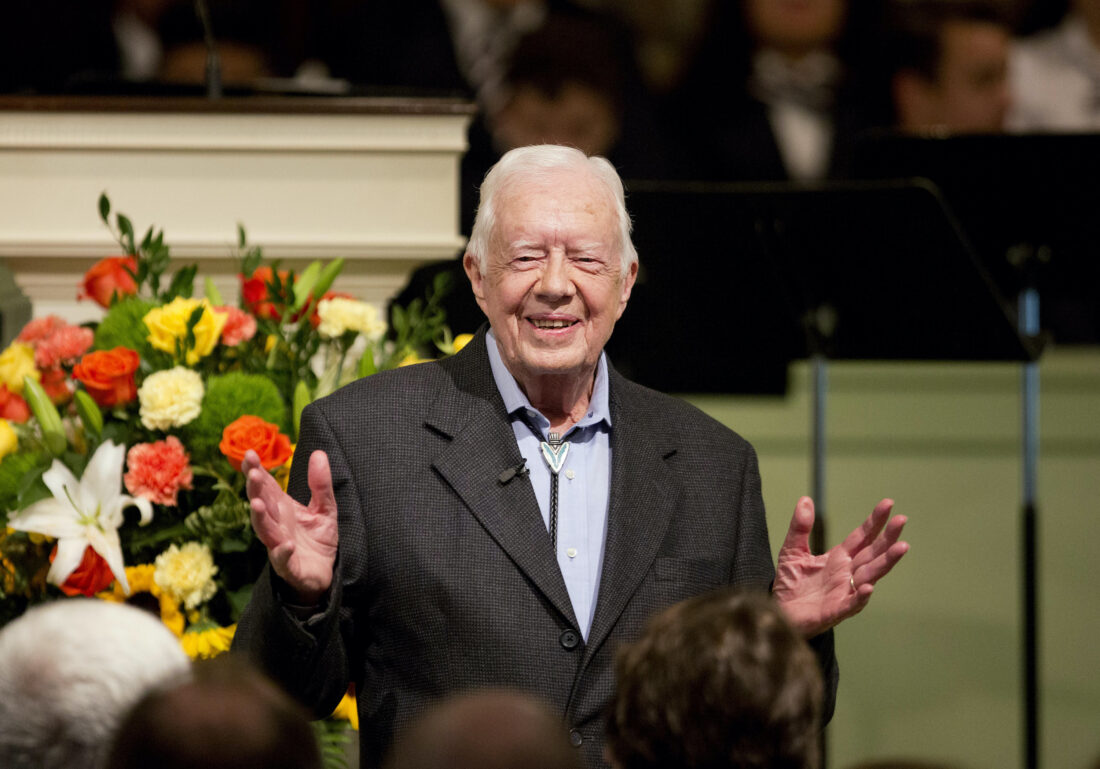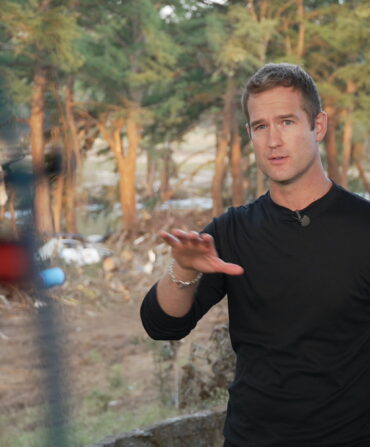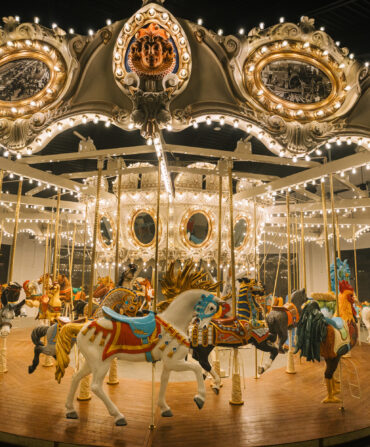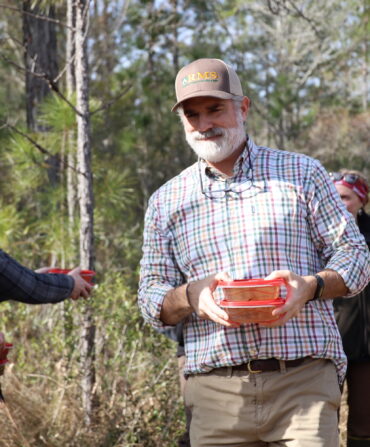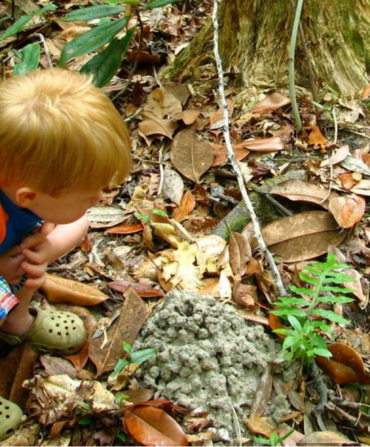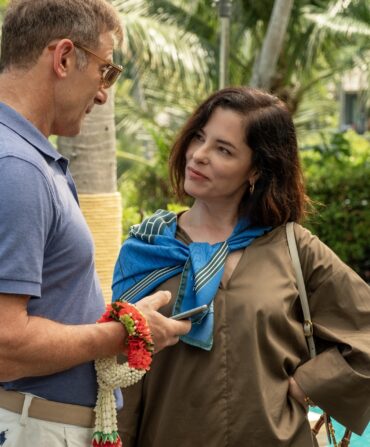Back in the early 1990s, before gentrification brought packs of hipsters to converge in its narrow streets, the Atlanta neighborhood of Cabbagetown was dominated by an abandoned cotton mill and monolithic concrete walls barricading a freight yard. Those walls were covered in graffiti. Driving through the neighborhood, I was always struck by one that rose beyond the usual tags—a portrait of the thirty-ninth president of the United States above the slogan “Jimmy Carter for Saint.”
When news broke in February 2023 that Carter had opted for hospice care, that graffiti portrait flashed into my mind. It kept doing so as the world essentially eulogized Carter in real time while he lived for nearly two more years, celebrated his seventy-seventh wedding anniversary, mourned the November 2023 death of his wife, Rosalynn, and turned one hundred. Now that he has died, pundits will weigh in on Carter’s political legacy. I’ll just focus on his prospective sainthood.
Carter’s single term as president was rocky. But he leveraged his status as an ex-president in the most remarkable way, spending four decades fighting disease, serving his fellow human beings, and remaining permanently entrenched in his South Georgia hometown, Plains. Whether in his carpentry workshop, sitting near the dugout at a Braves game, or debating with world political figures, Carter never strayed from his roots, nor veered from his commitment to human decency.
“The voice of one crying in the wilderness.” Isaiah 40:3
Born in Plains in 1924, Carter went to work at the age of five, selling boiled peanuts from a basket he toted through town. At a nickel a bag, he would earn enough to invest in several bales of cotton, which he eventually parlayed into a few rental properties; the teenaged future leader of the free world rode his bicycle to collect rent and did repairs himself. College brought him to Georgia Southwestern State University, then to Georgia Tech, and finally to the U.S. Naval Academy. In the Navy, he served as a senior officer on the Seawolf, one of the first nuclear submarines.
Along the way he married a hometown girl, Rosalynn Smith, and the couple later returned to Plains, where they joined a square dancing group. His promising political career—Carter was elected state senator in 1962 and governor of Georgia in 1971—brought his humble home life into relief, and in 1976, fresh off the Watergate scandal, American voters delivered the White House to a relative unknown with a strong Southern drawl and a staunch Baptist commitment to morality.
Carter’s term was marked by upheaval at home—gas prices soared, inflation surged, and moods soured. While his stances on key issues like the environment seem prescient now, his installation of solar panels on the White House prompted bemusement. His July 1979 “Crisis of Confidence” speech—dubbed the “Malaise” speech by political analysts—was a call for conservation and community engagement: “The energy crisis is real. It is worldwide. It is a clear and present danger to our nation. These are facts and we simply must face them.”
America did not want to face those facts. The crippling costs at home and troubles abroad, including the Iran hostage crisis, overshadowed the groundbreaking work Carter did brokering peace talks between Israel and Egypt. Voters ousted Carter in 1981 after just one term.
“Let no one seek his own good, but that of his neighbor.” I Corinthians 10:24
Just one year after leaving office, Jimmy and Rosalynn partnered with Emory University to create the Carter Center, a nongovernmental agency devoted to global democracy, human rights, and health care. They spent the next forty years crossing the globe in crusades against disease and electoral corruption. Relentlessly energetic, the Carters wrote books, learned Spanish, fly-fished, and built house after house for Habitat for Humanity. They were each awarded the Medal of Freedom by Bill Clinton in 1999, a turning point in Carter’s legacy. In 2002, Carter was awarded the Nobel Peace Prize.
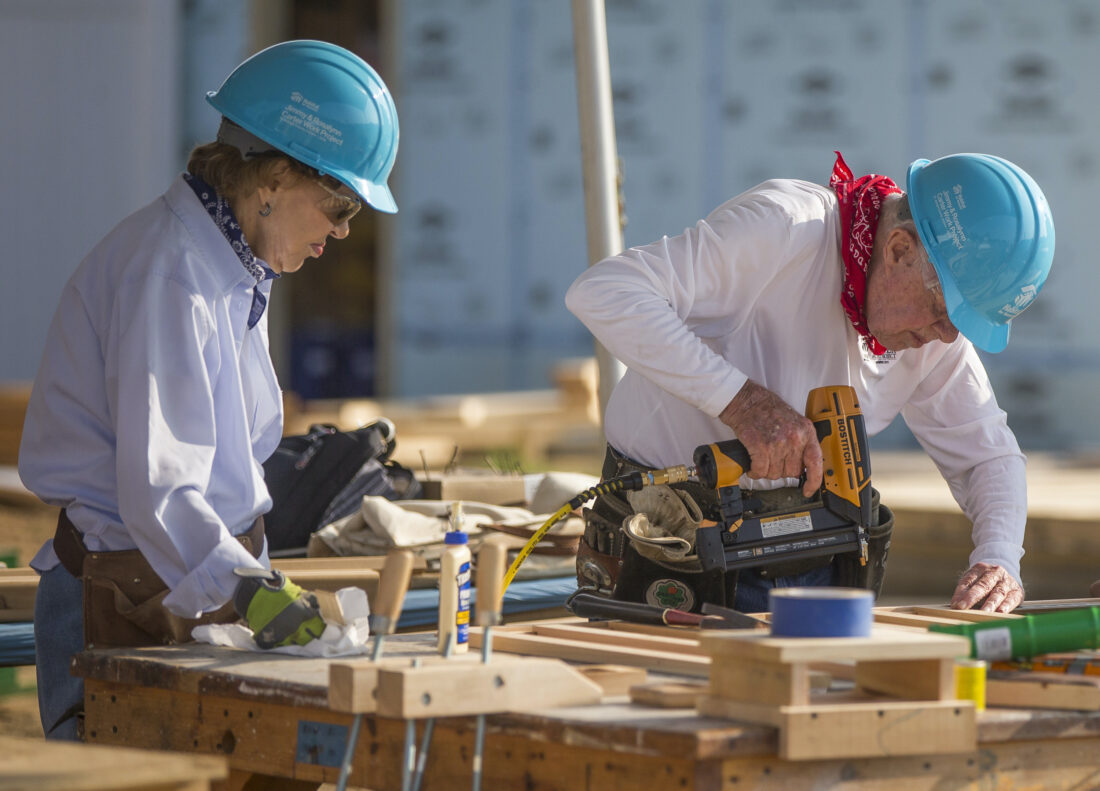
Through it all, the couple maintained their simple lifestyle, living in the same ranch house they’d built in Plains in 1961. Carter continued to teach Sunday school lessons at his hometown congregation, Maranatha Baptist Church, attracting a stream of pilgrims from around the world. Attending one of his classes in 2016, I was struck by his sincere effort to welcome and connect with those in attendance—and by his well-worn Bible. Carter, it always seemed to me, was one of those believers who actually read the manual. Of the hundreds of people crowded into the simple church, I spoke with plenty who had not voted for the man or approved of his tenure in Washington, but paid tribute to his life of service and his unwavering faith.
In Atlanta, Carter drew on the power of his office to launch the Atlanta Project, intended to bring together the city’s rich and poor for neighborhood-centric social change. In the 1990s I covered this effort for the local paper, and those reporting trips are what took me by that graffiti tribute. A prophet, Mark observed in the gospels, is not always heard in his hometown. At Atlanta Project gatherings, Carter spoke of his vision for the city’s haves to help its have-nots, for corporations to pitch in and aid struggling nonprofits, for churches to set aside self-segregation and focus on community-wide betterment. The plan was brilliant in its idealistic simplicity but never fully realized. I covered many small instances of kindness and cooperation, but sweeping change never materialized; the Atlanta Project was thwarted by contentious interactions between communities and those perceived as outsiders.
“And he called his twelve disciples and he gave them authority over foul spirits to cast them out, and to heal every ailment and disease.” Matthew 10:1
The Carter Center leads campaigns against disease and malnutrition and—thanks in large part to Rosalynn’s advocacy—also draws attention to mental health. To become a saint, one needs to perform a miracle, and perhaps it is the center’s contributions to the virtual eradication of Guinea worm disease that will matter most as Carter’s legacy is weighed. Now down to less than a dozen cases in the world, it may prove the first ever parasitic disease to be eliminated.
For almost a decade, Carter’s own health and longevity seemed miraculous. He battled melanoma and underwent aggressive treatment. In 2016, I was in the sanctuary at Maranatha Baptist Church when he told attendees that his cancer treatment was completed. “I’m kind of an experiment,” he said.
Whether he is canonized or lionized as history reflects on his legacy, Carter remains an experiment in leadership. Honest, committed, and unwaveringly good.
Hypothetically, if he were a saint, his name’s already been taken—twice. James the Greater is the patron saint of pilgrims. James the Lesser is the patron of pharmacists and the dying. Which leaves an opening for Saint Jimmy—perhaps the patron saint of those who persist.


